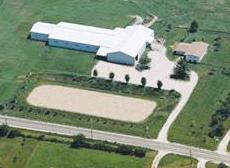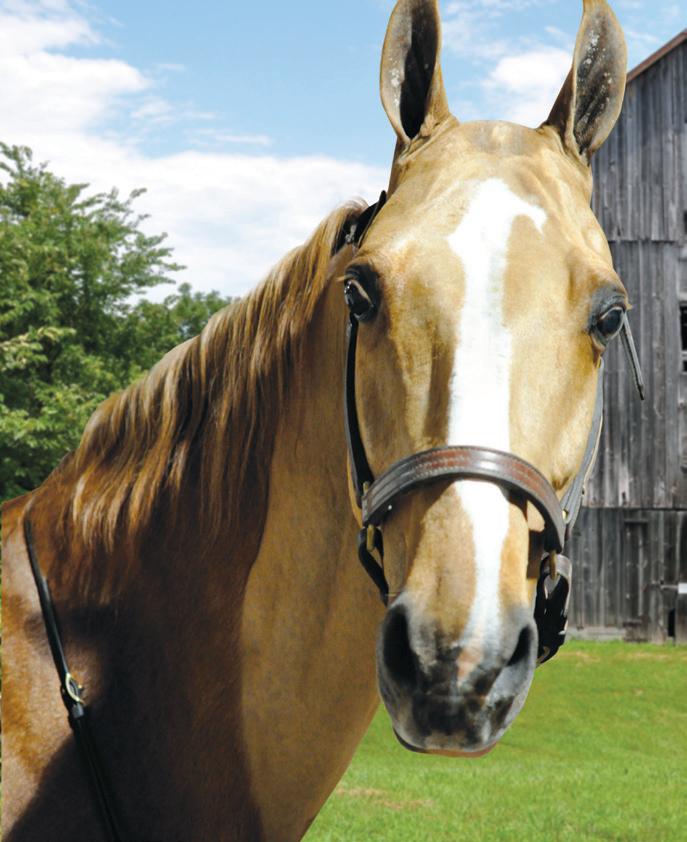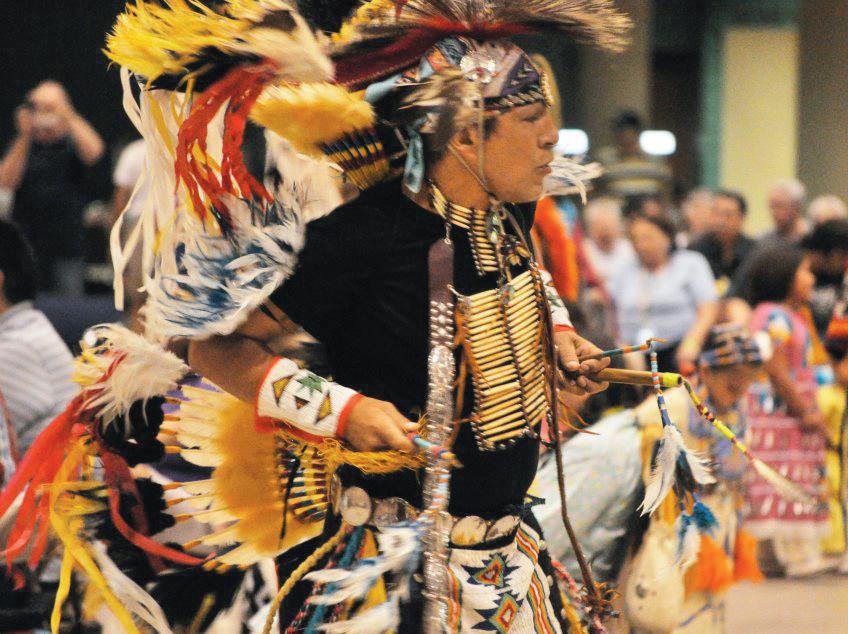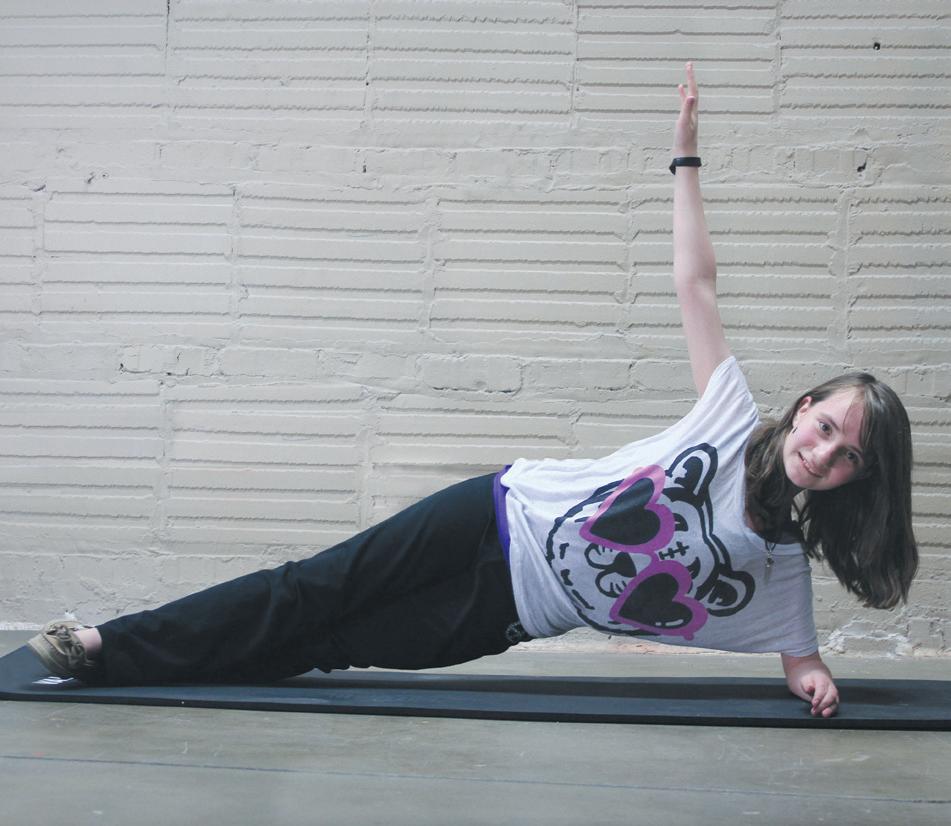
13 minute read
How to Choose a Lesson Barn
HOW TO…
How To Choose a Lesson Barn
Advertisement
A good lesson barn is important! Here are tips to find a barn that will work for you.
by Nancy Norton, Executive Editor
If you want to learn to ride, or have been thinking about changing your lesson barn, there are steps you can follow to help you find the best barn. You will improve your skills faster at a barn with a solid lesson program, and be safer while you learn. So how do you find a good lesson barn? Ask friends and relatives who ride for references. Tack shops can also be good resources. You can find some barns with websites, and others doing online advertising, so get online and search. Once you have a list, make appointments to visit before making a decision. Choose a barn that puts safety first. Barns teaching minors should always require a helmet, no exceptions. You should also have to wear long pants and boots or closedtoe shoes. Time your visit so you can watch a private and group lesson at your level, if you can. If you know what style of riding you are interested in, make sure the barns you focus on offer that style. This may sound like a lot of work, but it will pay off in the end. Once you go through these steps, it will become clear which barn is the one for you. It will just feel right! And if you make a good decision now, you will have a better learning experience, and a stronger chance to achieve the goals you set for yourself.
Questions to ask the barn:
• What are your lesson horses like, in terms of age and training? • How many lesson horses do you have? • What is a typical first lesson like? • What are the ages of the students you currently teach? • What can you tell me about the background and credentials of the instructor? • What equipment will I need? • How much do you charge for lessons?
Questions to ask yourself:
• Do the horses look happy and healthy? • Is the owner and staff friendly? • Do I like the instructor I would take lessons from? • Is the barn clean and tidy or run down? Remember, some dirt is to be expected; it is a barn! • Do I want to compete? Choose a barn offering that opportunity. • Are there facilities for all the activities I want to try? • Are there fair but firm rules for everyone? n
Stylish and Individual Fashion Accessories
Isamiashop.com
Free shipping to your door
Q & A
Ask The Instructor
by Julie Kidrowski, Managing Editor
QJulie Kidrowski is a graduate of William Woods University, with nearly a decade of experience teaching beginner through advanced lessons. This month she discusses diagonals. To submit your question, please email her at Julie@horseandacademy.com I’ve been working on diagonals for- the left shoulder. for several strides before trying ever! I can’t see them and don’t un- Be sure to take breaks as you again. If you still feel off, change derstand them. Last week at the horse practice! This helps develop your your diagonal and see if this helps. show, I didn’t hear my instructor say eye to seeing the motion quickly This would be a good time to “change” and ended up posting on the and correctly. When you are able check in with your instructor or an wrong diagonal the entire time. It was to see this movement easily, prac- advanced rider to make sure so embarrassing! tice connecting your posting to the you’re on the correct path to seeword you use. ing your diagonal. A: One of the most difficult skills My students have to find the to master (of course, after learning shoulder movement and practice to post) is to see the correct diago- their posting with that shoulder nal. Let’s start by talking about several times each direction. As the trot. a challenge, I ask them to change Horses trot in diagonal pairs. their diagonal every time they That means the front left leg moves post as they take a break from at the same time as the back right watching, and then find their leg and the front right moves at regular posting rhythm and go the same time as the back left. back to looking for the shoulder The easiest way to see a diago- movement. You’ll want to be sure nal is to find the lowest and fur- to practice this several times each thest forward point of the horse’s ride until you feel confident you shoulder. When riding at the walk, can connect the two. practice watching the shoulder Now, lets talk about which move back and forth. diagonal you should be riding! I ask my students to say the Have you ever heard the old sayword “now” or “down” when the ing “rise and fall with the leg on lowest point of the horse’s shoul- the wall?” This is the easiest way der by the wall is all the way for- to know which diagonal to be on. ward. You are now aware when If your horse is going first way of the horse is just about to set his the ring, his right shoulder will be foot down. against the rail and you’ll want After you feel confident seeing Illustration courtesy Dana’s Doodles to post with the right shoulder. this movement at the walk, step That means going second way, up to the trot. Again practice see- You will want your seat to be when the left shoulder is on the ing the lowest point of the shoul- going down as you say the word rail, you’ll want to post with the der move forward, still using the “now” or “down”. If your tim- left shoulder. word “now” or “down.” It helps ing seems off, take a break from Good luck and keep practicing! to practice with both the right and watching the shoulder, and trot n
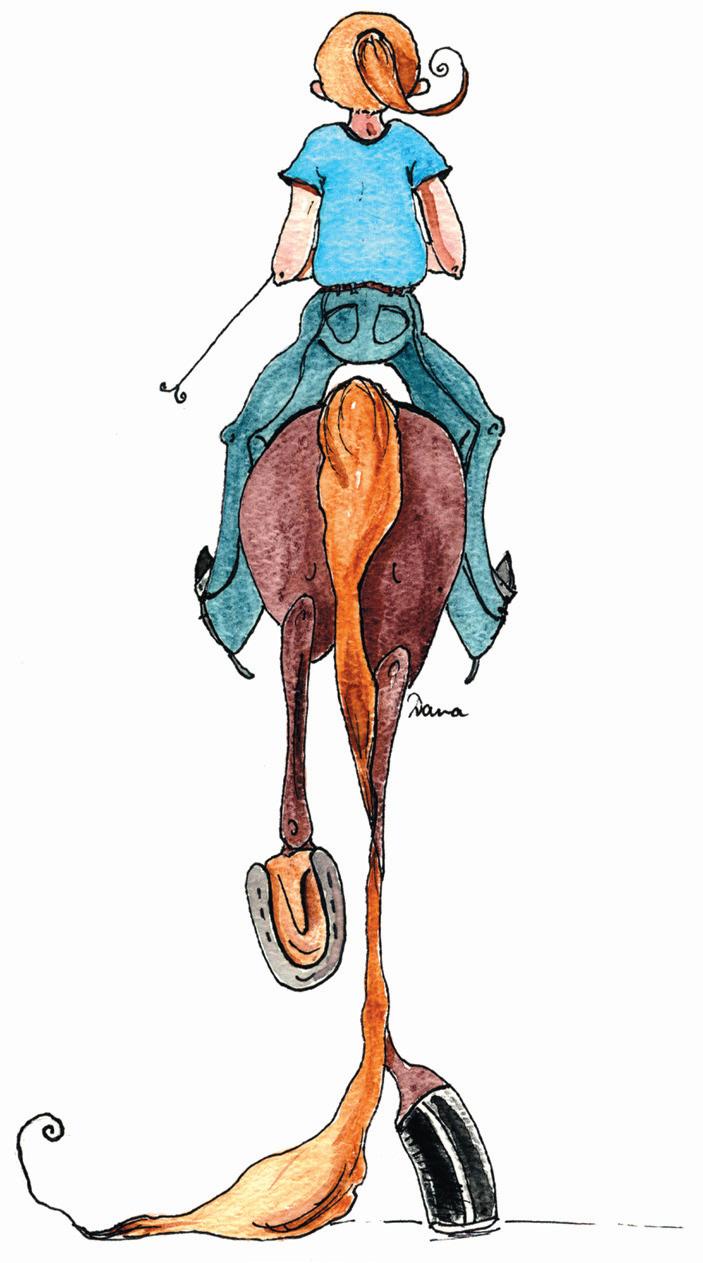
READ A BOOK
Book Club
Jas Schuler assaults Hugh Robicheaux after the death of her favorite horse and gets placed in foster care, unable to even visit her sick grandfather. In the end, this Edgar Award nominated mystery finds Jas solving the question of why Robicheaux would kill his own prize winning horses.
by Faye Hemze, Staff Writer

Things can’t get much worse for thirteenyear-old Jas. Her favorite horse is dead, and she is in trouble with the law for assaulting Mr. Robicheaux, the owner of the elite horse farm where she works. Her Grandfather is being blamed for the deaths of Mr. Robicheaux’s prize winning horses. Jas has lived and worked with her Grandfather on Mr. Robicheaux’s High Meadows Farm for the past five years. Now with Grandfather sick and no other family to turn to, Jas must go to court where she is ordered into foster care.
It is at the Second
Title: Shadow Horse Author: Alison Hart Paperback: 272 pages Reading Level: Grades 5-8
Chance Farm where she sees the other side of the horse world, a place where abused and neglected horses and animals are welcomed and protected. Jas feels deep compassion for these animals, as she tries to figure out where she belongs in the equine world.
Her suspicious nature makes it hard to find friends until she is able to prove to Chase, a fellow worker at Second Chance Farm, that she isn’t a “horse snob.” As they learn to trust each other, they learn some secrets of Shadow, a lame and sick horse Jas rescues from the local “kill” auction house. Could Shadow also hold the key to the mystery Jas has been trying to solve?
As Jas struggles to clear her Grandfather’s name, Mr. Robicheaux retaliates, threatening to cut off the medical care Grandfather needs to get his health back. These blackmail threats make the reader cheer for Jas as she unravels the mystery of the untimely deaths of two beautiful prize winning Morgan horses. But if she can prove that Mr. Robicheaux committed fraud and murder, it will take Jas and her Grandfather away from the life they know.
Shadow Horse will make the reader ask questions: first about the mysterious deaths of the valuable show horses, and then about animal rights. The author portrays Jas as an independent, untrusting teenager with problems far beyond what a thirteen year old should have to face. Readers will be relieved as Jas learns to trust others, and finds where she belongs in her world. Shadow Horse is a page-turner that will be enjoyed by both horse lovers and mystery fans. n
The Books of the Morgan Horse Series… Have You Read Them All?
And Coming This Fall… The Further Adventures of Blackjack: The Champion Morgan Horse!
Available at your favorite tack shop, Amazon.com and through the publisher, Willow Bend Publishing www.willowbendpublishing.com
ETCETERA it’s all fun & games it’s all fun & games Across: Down: Cris Cross Puzzle > Cris Cross Puzzle [Applesauce] 2. The right hand side of the horse. 1. Dressage movement in which the horse trots in an 5. The left hand side of the horse. extremely collected and animated manner. 7. Two-track movement in which the horse is evenly bent 3. School movement in which the horse, at any pace, along the length of its spine away from the direction in moves down the center of the school in a series of which it is moving. equal-sized loops. 11. A term used to describe a horse which pulls or hangs 4. Controlled gait; a correct coordinated action. heavily on the rider’s hand. 6. Another name for aids. Signals by which the rider 13. A command used in the show ring for riders to come communicates his wishes to the horse. to the center of the ring and form a line. 8. Equestrian sport involving gymnastic exercises done 15. The wooden or metal frame of a saddle. on the back of a moving horse. 16. A slow four-beat gait. 9. A lateral two-beat gait mostly performed by gaited 18. A faulty action, where the foot of the foreleg is thrown horses. outward in a circular movement with each stride. 10. Mild bucking motions. 20. A discipline in which a horse or horses pull a vehicle 11. Strong, but controlled, forward movement in the horse such as a carriage, cart or wagon. (not to be confused with speed). 22. A verbal command used to signal a well-trained horse 12. A fault in a gait which occurs when a hind foot strikes to stop. Usually combined with gently pulling the bottom of the front foot on the same side. back on the horse’s reins. 14. The process of going through the gaits while perform23. When the horse is at a standstill. ing suppling exercises to limber up both horse and 24. Moderate-speed gait in which the horse moves rider in the beginning of a workout. from one diagonal pair of legs to the other, with 17. Throwing the front feet outward as they are picked up; a period of suspension in between. most common in toe-narrow or pigeon-toed horses. 19. An exercise, basically a ‘pay attention, please’ used to
To get an official measurement of communicate to the horse that the rider is about to ask for some change of direction or gait, or other exercise or movement. a horse’s height, 21. In a ring, the side of the horse closer to the you must measure center of the ring. them without their shoes.
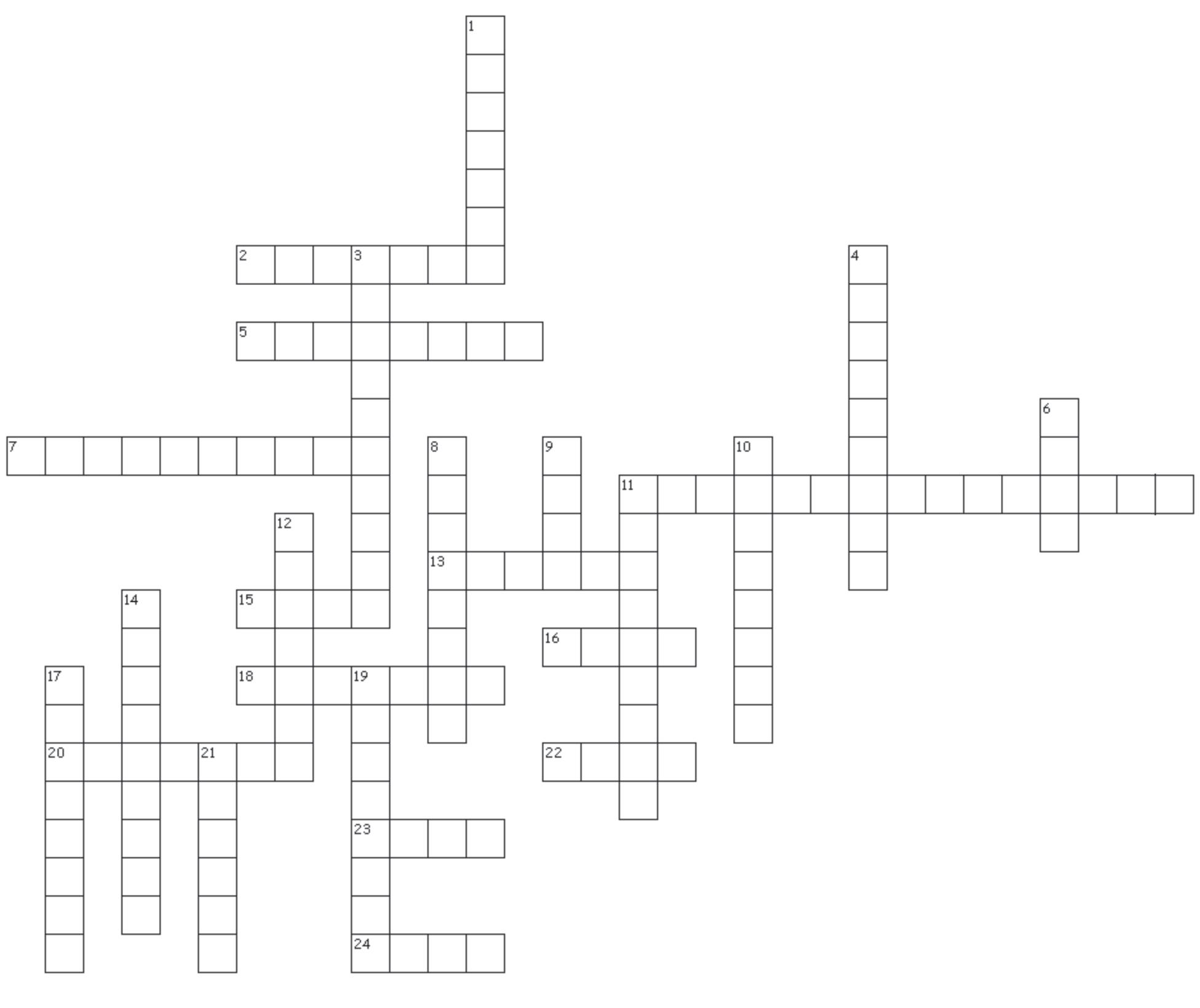
“ ” A horse: He knows when you’re happy He knows when you’re comfortable He knows when you’re confident And he always knows when you have carrots. ~ Unknown
Murphy’s Law for Horses
· The less time you have, the longer it takes to load the horse in the trailer. · The more carefully you check the trailer, the more likely the truck will break down. · As soon as you bring a new hoof pick home, it will disappear! · If you think you’ve remembered everything for the horse show, you’ve forgotten your horse. · The more people watching, the more your horse will misbehave. · Your favorite bridle will always break, but the ugliest one will last forever. · The lighter the horse’s coat the more likely it will roll in manure the day before the show. · You will end up with the same number of horses as stalls in your barn. · Your clippers will break when you have one ear left to trim. · As soon as you’ve decided on a training program, the riding arena will flood.
July Word Search-Pony Breeds DeannaWord Search Word Search
A K N A A F A A A U A E B L A K G A B G L E N D Y I E G L N S H A E E E A N A D U S N R E T S E W N I R A N A I R N E W F O R E S T X L P R R N E K T E A U S G O E B H I M L Y U O S L W A N I G N Z I Y H T U O B C M S A C I R E M A E H T F O Y N O P I R W O A C R N M E P I G R T X G R L F N A I C I L A G T R E E K I R D I D A L E S S N E W F O U N D L A N D S C E K E K I A T G O C R D A K A E M I A R Z A Y A R A M E N N O C L O C R E M O Y E R I S T A W I R Q H H I E W S G E D A O R R T E O H S G T G M E R E N S M A S A N L N L C I O W A L I I I A U A T D N A L T E H S W I S E A L Q A O E I A R E E L I A Y H H M I H I F H R N B A E E F R B
AMERICAN WALKING AmericanWalking BASOTHO Basotho BHIRUM Bhirum BHOTIA Bhotia Chincoteague Connemara Dales Dartmoor Eriskay Exmoor Faeroes CHINCOTEAGUE CONNEMARA DALES DARTMOOR ERISKAY ExMOOR FAEROES Fell FELL Galician GALICIAN Highland HIGHLAND KerryBog KERRY BOG Kirdi KIRDI Merens MERENS NewForest NEW FOREST Newfoundland NEWFOUNDLAND Nooitgedacht NOOITGEDACHT Ponyoftheamericas PONY OF THE AMERICAS Quarter Shetland Skyros Somali Welara Welsh WesternSudan Zaniskari QUARTER SHETLAND SKYROS SOMALI WELARA WELSH WESTERN SUDAN ZANISKARI
Cooking Class
Red, White & Blue Shortcake
Supplies you will need:
• 2 pints strawberries • 1 (12 ounce) frozen pound cake, thawed, cut into 10 slices • 1 1/3 cups blueberries • 1 (12 ounce) container COOL WHIP Whipped Topping, thawed Slice 1 cup strawberries; set aside. Halve remaining strawberries; set aside. Line bottom of 12 x 8-inch baking dish with cake slices. Top with 1 cup sliced strawberries, 1 cup blueberries and whipped topping. Place strawberry halves and remaining blueberries on whipped topping to create a flag design. Refrigerate until ready to serve. Makes 15 servings.
Cupcake Flag
Supplies you will need:
• 70 cupcakes • Red, White and Blue icing • Candy stars (or you can pipe the stars with icing) Make your favorite cupcake recipe. Cover 12 with blue icing, placing 1 candy star in the center, (or pipe a star in white icing). Cover 32 with red and 26 with white icing. Arrange accordingly. Refrigerate until ready to serve. Makes 70 servings.
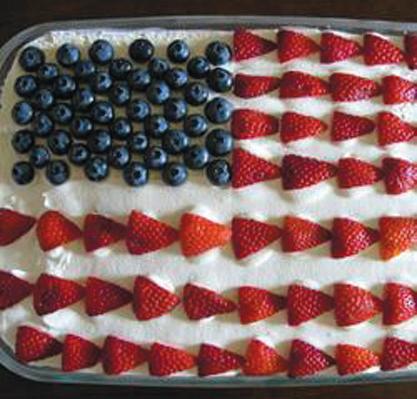
Photo: www.kraftrecipes.com/Ritsuko F, photographer

Photo: Helping Hands Therapeutic Riding


